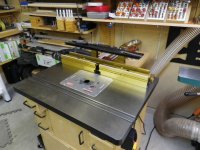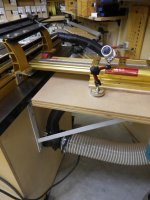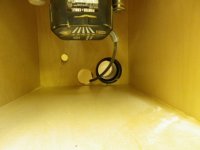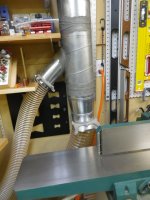Guys-I am relatively new to woodworking and am currently setting up my shop. I like to buy top of the line products so I don't outgrow them or have to upgrade them (which, like yourself, is why I am here!). I already have a Kapex miter and a Trion jig saw, both of which I am very happy with.
The next thing I need to buy is a router to use in a router table. This router will be permanently mounted to the table--I will be getting another router for handheld use.
My question to you guys is, since I am only mounting it into a table, is something like Milwaukee going to be just as good as Festool? I know Festool's routers have a lot of nice features and when it comes time to buy a handheld router I'm certain Festool will be the leading candidate. But, if I am buying a one dimensional router that will permanently be mounted into a router table, is Festool a waste? As much as I loo for an excuse to buy Festool, I am not sure it will be better than most quality routers in a table only.
I don't have a router table picked out yet. I have been told i should make my own, which is an option. The table will be permanent in the shop as well, so no need to be terribly portable. I would rather it be stable and functional.
Any help is appreciated! Thanks for everyone's help...I am glad I found this group of people who share my admiration for Festool!
The next thing I need to buy is a router to use in a router table. This router will be permanently mounted to the table--I will be getting another router for handheld use.
My question to you guys is, since I am only mounting it into a table, is something like Milwaukee going to be just as good as Festool? I know Festool's routers have a lot of nice features and when it comes time to buy a handheld router I'm certain Festool will be the leading candidate. But, if I am buying a one dimensional router that will permanently be mounted into a router table, is Festool a waste? As much as I loo for an excuse to buy Festool, I am not sure it will be better than most quality routers in a table only.
I don't have a router table picked out yet. I have been told i should make my own, which is an option. The table will be permanent in the shop as well, so no need to be terribly portable. I would rather it be stable and functional.
Any help is appreciated! Thanks for everyone's help...I am glad I found this group of people who share my admiration for Festool!





